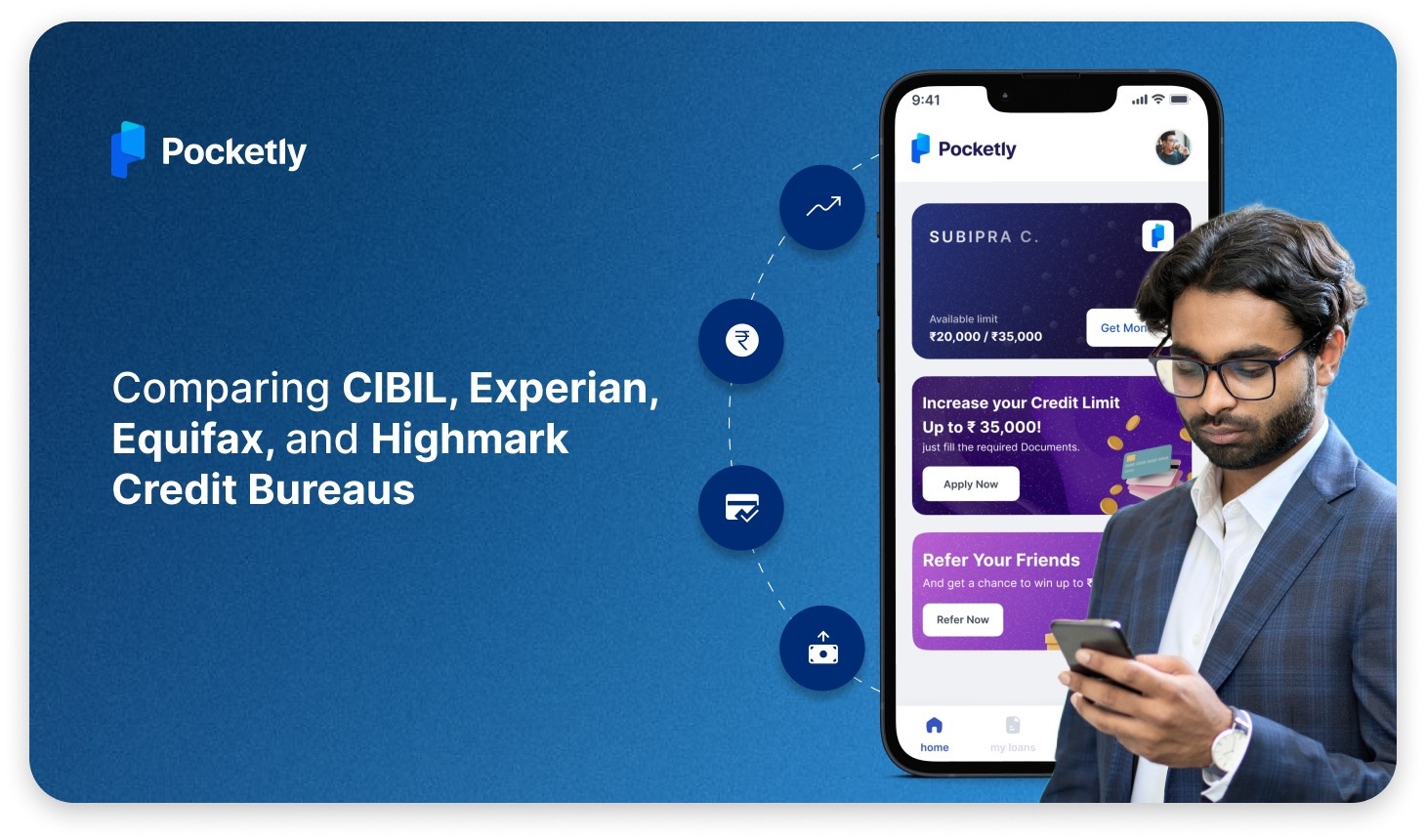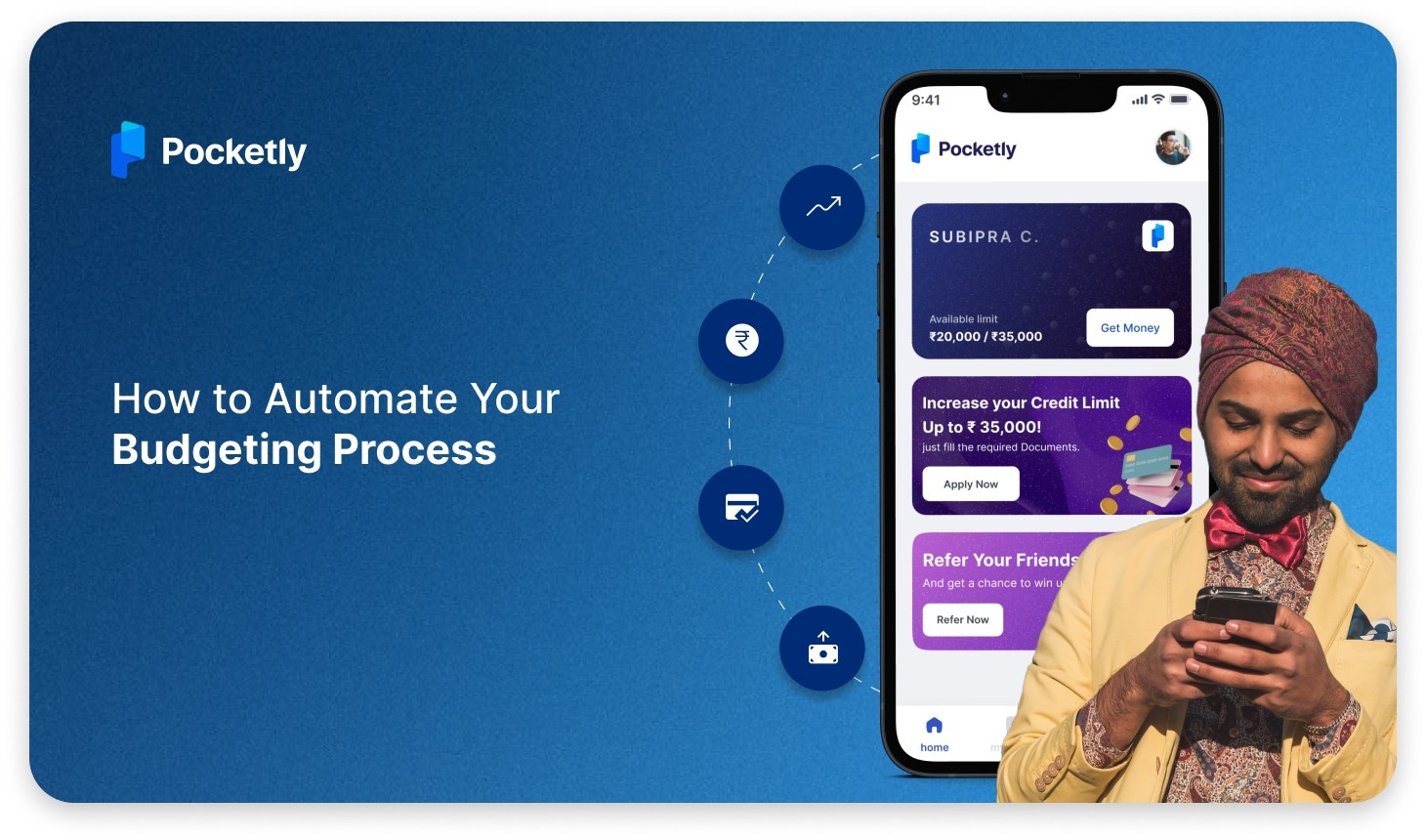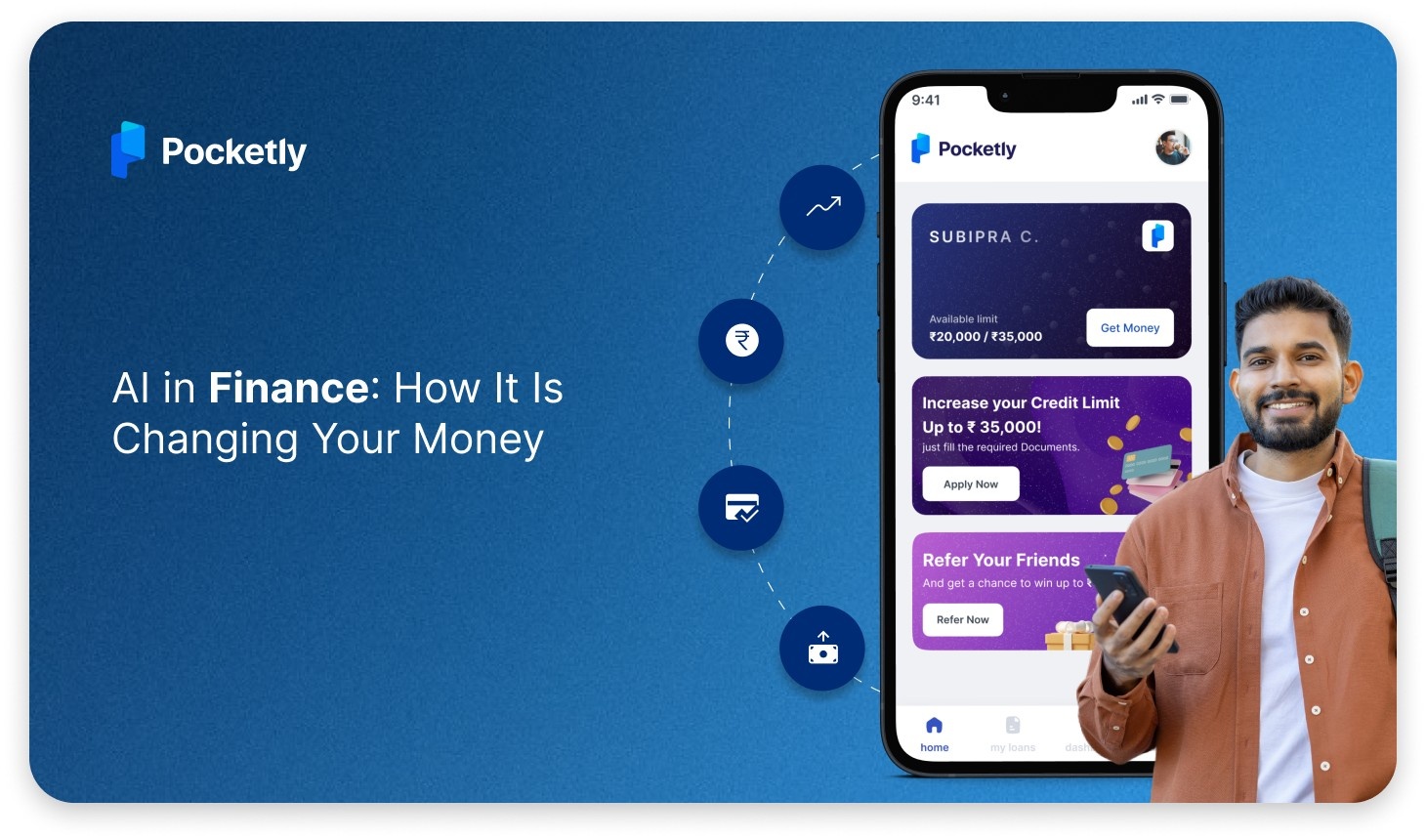
Are you losing sleep over an unexpected bill, tuition fees, or a sudden medical expense? As a young Indian, juggling expenses can feel like walking a tightrope, especially when you're hit with unforeseen costs. And to make matters worse, loan jargon like "write-off" and "waive-off" can add to the confusion. What do these terms really mean, and how can they impact your financial future?
Simply put, a loan write-off is when a lender removes a loan from their books, while a loan waive-off means you're no longer obligated to repay the debt. But the implications can be far-reaching, affecting your credit score, future borrowing options, and overall financial well-being.
In this blog, we’ll explain these complex concepts in easy-to-understand terms so you can navigate your financial journey with confidence, no matter what challenges come your way.
What is Loan Write-Off?
A loan write-off occurs when a lender, such as a bank or digital lending platform, chooses to eliminate a loan from its balance sheet as an asset. Think of it as the lender acknowledging that they probably won’t be able to recover the full amount you borrowed. But here’s the catch: it doesn’t mean you’re off the hook.
Why Do Lenders Write-Off Loans?
Lenders typically write off loans under the following conditions.
- Non-payment: If the borrower consistently fails to repay the loan.
- Non-Performing Asset (NPA): The loan is categorized as an NPA, meaning it isn't generating income for the lender.
- Financial Records: The lender writes off the loan to clean up their financial books and reduce tax liabilities.
What Happens After a Loan is Written Off?
It's crucial to understand that a write-off is primarily an accounting maneuver.
- No Forgiveness: A write-off is primarily an accounting process, and the borrower is still legally obligated to repay the loan.
- Continued Recovery Efforts: The lender may continue to pursue repayment through collection agencies or legal action.
- Impact on Credit: The loan write-off may affect the borrower’s credit score, as the lender can report it to credit bureaus.
Imagine a student takes a small digital loan of ₹5,000 to cover an unexpected medical bill. Due to unforeseen circumstances, she's unable to repay it for several months. After repeated attempts to collect the dues, the lending platform might write off the loan as an NPA.
However, the student still owes the money, and the lender may keep trying to recover it, potentially affecting her credit score.
So, a loan write-off means you still owe the money, even if the lender has removed it from their books. Confusing, right? This leads us to the next important concept: what exactly is a loan waive-off, and how does it differ?
What is Loan Waive-Off?
Unlike a write-off, a loan waive-off is like hitting the jackpot when it comes to debt relief. It means the lender or financial institution has completely forgiven the outstanding loan amount. You are no longer legally required to repay it. In essence, it's a cancellation of the debt.
Loan waive-offs typically occur in specific scenarios. They're often associated with government relief programs during times of widespread economic hardship or natural disasters. For instance, after a devastating flood or earthquake, the government might announce a scheme to waive agricultural or educational loans for affected individuals.
Imagine a young entrepreneur who takes out an educational loan to pursue a degree in sustainable agriculture. Unfortunately, a severe drought hits their region, leading to widespread crop failure and financial distress for farmers. In response, the government announces a loan waive-off program for farmers and students in related fields. As a result, the entrepreneur's educational loan is waived, providing much-needed relief during a difficult time.
Key Differences Between Loan Write-Off and Waive-Off
Now that we’ve defined write-offs and waive-offs, let’s get down to what are the key differences are, and why you should care? It's not just about the words themselves, but about how they impact you, the lender, and the broader economy.
1. Repayment Obligation
- Loan Write-Off:
- Even though the loan is written off by the lender, the borrower is still legally obligated to repay the debt. The write-off is an accounting adjustment, but the borrower’s liability remains, and the lender can continue pursuing recovery efforts.
- Loan Waive-Off:
- In this case, the borrower is no longer obligated to repay the loan. The lender cancels the debt entirely. This typically happens under specific conditions, such as natural disasters or economic relief programs, where the borrower’s financial circumstances justify such a decision.
2. Financial Impact
- Loan Write-Off:
- The write-off is an internal accounting move that does not immediately affect the lender’s cash flow. It helps clean up the lender’s balance sheet, reducing tax liability and the apparent amount of bad debt. However, the lender does not incur a direct cash loss from the write-off.
- Loan Waive-Off:
- This results in an actual loss for the lender. When the loan is waived, the lender writes off the debt entirely, which reduces their assets. This represents a real financial loss because the loan is no longer recoverable in any form.
3. Collateral
- Loan Write-Off:
- If there is any collateral tied to the loan, the lender can still retain it and try to recover the debt by selling the collateral. This is a common practice in secured loans where assets like property or vehicles are used as security.
- Loan Waive-Off:
- With a waive-off, any collateral tied to the loan must be returned to the borrower. Since the debt is canceled, the lender cannot seize or sell the collateral.
4. Initiation
- Loan Write-Off:
- A loan write-off is typically initiated by the lender based on its internal assessment. If they believe the loan is no longer recoverable, they may classify it as a Non-Performing Asset (NPA) and proceed with the write-off. This decision is mostly driven by the lender’s internal policies.
- Loan Waive-Off:
- A waive-off is usually part of a broader initiative, often driven by governmental policies or special relief programs. It can also be initiated by the lender as part of a goodwill gesture or when the borrower’s situation justifies it (e.g., after a natural disaster or an economic crisis).
5. Typical Scenarios
- Loan Write-Off:
- This typically happens when a loan has been overdue for a long period, usually more than 90 days. Once a loan is considered a Non-Performing Asset (NPA), the lender may decide to write it off.
- Loan Waive-Off:
- Waive-offs are often seen in cases of extreme hardship, like during natural disasters, economic downturns, or through targeted government relief efforts aimed at specific sectors.
6. Lender Benefits
- Loan Write-Off:
- The main benefit to the lender is the ability to clean up their balance sheet. Writing off a loan reduces the reported bad debt, and the lender may also benefit from tax deductions due to the loss.
- Loan Waive-Off:
- The lender does not benefit financially from a waive-off. However, there may be a positive reputational impact, as the lender is seen as compassionate or supporting during times of crisis. Additionally, waive-offs may lead to goodwill in the community.
7. Borrower Impact
- Loan Write-Off:
- The borrower is still legally liable for the debt, meaning they could face continued collection efforts. While their credit score is negatively impacted, it is not as severe as a full foreclosure or bankruptcy. The debt can be pursued through collection agencies or legal action.
- Loan Waive-Off:
- For the borrower, a waive-off is highly beneficial, as they are no longer liable for the debt. While it might have a slight impact on their credit history, the financial relief is significant. The debt is canceled, and no recovery efforts will be made.
8. Impact on Future Loans
- Loan Write-Off:
- A loan write-off makes it harder for the borrower to secure future loans. Since the debt was classified as an NPA, the borrower’s creditworthiness is significantly affected, potentially leading to higher interest rates or stricter lending conditions.
- Loan Waive-Off:
- While a waived-off loan may also affect the borrower’s credit score, the impact is usually less severe than a write-off. Future lenders may still be cautious, but the borrower is not facing the same level of financial burden as with a written-off loan.
9. Recovery Methods
- Loan Write-Off:
- Even after a loan is written off, the lender may continue recovery efforts using collection agencies, legal action, or other methods. The borrower may face ongoing efforts to collect the debt, which can include harassment or legal proceedings.
- Loan Waive-Off:
- Once the debt is waived off, no further recovery efforts are made. The borrower is free from any obligations, and the lender has no legal grounds to pursue the debt.
10. Transparency
- Loan Write-Off:
- The write-off process is not always transparent. Borrowers may be unaware of their continued obligation or the lender’s recovery attempts. It’s important for borrowers to understand their rights and obligations during this process.
- Loan Waive-Off:
- Waive-offs are generally more transparent. Since they are often part of a public program, the process is usually well-documented and communicated to the borrower. They typically receive official confirmation that the debt has been canceled.
| Feature | Loan Write-Off | Loan Waive-Off |
|---|---|---|
| Repayment Obligation | The borrower is still legally obligated to repay the debt. | Borrower is no longer obligated to repay the debt. |
| Financial Impact | Accounting adjustment, no immediate cash loss. | Actual loss for the lender, reduces assets. |
| Collateral | Lenders may retain collateral to recover debt. | The lender must return collateral to the borrower. |
| Initiation | Lender's decision is based on loan recoverability. | Often part of government relief or lender policy. |
| Typical Scenarios | Loans overdue for extended periods (NPAs). | Natural disasters, economic crises, or relief efforts. |
| Lender Benefits | Reduces tax liability and clears the balance sheet. | No direct financial benefit, but may improve goodwill. |
| Borrower Impact | Ongoing liability, may affect credit score. | Debt is canceled, no further obligations. |
| Impact on Future Loans | Affects creditworthiness, harder to get future loans. | Less severe impact on future loan eligibility. |
| Recovery Methods | Collection agencies or legal action may continue. | No recovery efforts are made. |
| Transparency | Often lacks full transparency on recovery processes. | Transparent, with clear documentation of debt cancellation. |
In essence, while both write-offs and waive-offs deal with loan non-payment, they represent fundamentally different actions with distinct implications for both the lender and the borrower. Understanding these differences is key to making informed financial decisions and managing your credit health.
Benefits and Process of Loan Write-Off
While a loan write-off might initially seem like a negative move, it serves as an important tool in maintaining financial stability and proper accounting practices. Let’s break down both the benefits and the process involved.
Benefits of Loan Write-Off for Lenders and Borrowers
- Improved Financial Records
For lenders, writing off bad loans helps clean up their balance sheets. Non-performing loans (NPAs) no longer generate income, and removing them makes financial records look healthier, boosting the lender's standing with investors and regulatory bodies.
- Tax Relief
Loan write-offs allow lenders to reduce their taxable income. By writing off bad debts, they can claim tax deductions, which directly benefit the lender's financial standing by lowering their tax liabilities.
- Better Resource Allocation
Once a loan is written off, lenders can focus resources on more profitable, recoverable loans. This prevents them from investing additional time and money into loans that are unlikely to be repaid, ensuring a more efficient management of assets.
- Debt Relief (Temporary)
For borrowers, a write-off can offer temporary relief from ongoing collection efforts. Although the debt is still owed, the lender may reduce the intensity of recovery actions in the short term, offering the borrower a chance to address their financial situation.
- Credit Score Impact
A loan write-off negatively impacts the borrower's credit score, but this effect is typically less severe than other outcomes, such as foreclosure. While it still presents challenges, it does not carry the same level of long-term damage as more drastic financial consequences.
- Fresh Start for Borrowers
Though the borrower remains responsible for the debt, the loan write-off provides an opportunity for a fresh start. Borrowers might be able to negotiate new terms or seek other financial solutions, giving them a chance to regain control over their financial health.
The Process of Loan Write-Off
Loan write-offs follow a structured process that helps both lenders and borrowers manage their financial situations. Here’s how it typically works:
- Loan Classification as Non-Performing Asset (NPA)
A loan becomes overdue, usually after 90 days of non-payment, and is classified as an NPA by the lender.
- Internal Assessment by the Lender
Lenders assess the loan's recoverability and decide whether it is worth pursuing further or should be written off.
- Decision to Write-Off the Loan
Based on the assessment, the lender makes the decision to write off the loan, marking it as a loss.
- Accounting Adjustment
The loan is removed from the balance sheet, and the lender records the loss in their financial statements.
- Continued Collection Efforts (Optional)
While the loan is written off, lenders may still pursue collection through agencies or legal action, as the borrower remains liable for the debt.
- Tax Deductions
The lender can claim a tax deduction on the written-off loan, reducing their overall tax liability for the year.
Loan write-offs provide significant benefits for lenders in terms of financial stability, tax relief, and resource management. Understanding the benefits and the process of loan write-offs helps both parties navigate the financial and legal implications of such a decision.
Now that we've explored the benefits and process of loan write-offs, it's important to turn our attention to loan waive-offs. Unlike a write-off, a waive-off cancels the debt entirely, offering different implications for both lenders and borrowers.
Benefits and Process of Loan Waive-Off
Loan waive-offs are typically more beneficial to borrowers, providing them with complete debt relief. However, they can present challenges for lenders. Let’s take a closer look at the advantages and the structured process of loan waive-offs.
Benefits of Loan Waive-Off for Lenders and Borrowers
- Financial Respite for Borrowers
One of the most significant benefits for borrowers is the complete cancellation of their debt. This can be a lifeline, especially during economic hardships or after a natural disaster, providing them with immediate relief from financial stress.
- Goodwill and Reputation for Lenders
For lenders, offering a loan waive-off can foster goodwill and improve their reputation. By showing compassion during tough times, lenders can enhance their public image, especially when waive-offs are part of government-led relief programs or in cases of crisis.
- Enhanced Borrower Loyalty
A loan waiver can lead to increased loyalty among borrowers, especially in cases where the waive-off is part of a special relief program. Borrowers may feel more inclined to do business with a lender that has shown flexibility and support during difficult circumstances.
- Economic and Social Responsibility
Loan waive-offs can contribute to the broader economy by alleviating the financial burden on borrowers during crises. This not only helps individual borrowers but can stimulate overall economic recovery in the long term, especially in sectors affected by natural disasters or economic downturns.
- Improved Borrower Creditworthiness
While waive-offs may have a minor impact on a borrower’s credit score, they typically don't carry the same long-term consequences as other financial issues like bankruptcies or foreclosures. In the long run, borrowers can recover their credit rating and financial standing more quickly after a waive-off.
The Process of Loan Waive-Off
Loan waive-offs typically follow a more structured process, often initiated during specific events like economic crises, government aid programs, or after a lender’s special policy decision. Here’s how it usually works:
- Initiation of Government or Lender Policy
Loan waive-offs often begin as part of a government relief program or lender policy. These can be implemented during economic downturns, natural disasters, or sector-specific crises. The decision to waive a loan is generally communicated to borrowers through official channels.
- Eligibility Determination
Not all loans are eligible for a waive-off. Lenders or governments usually set criteria for which loans can be waived, often based on the borrower’s financial situation, the nature of the crisis, or the severity of hardship faced by the borrower.
- Approval of Waive-Off
Once eligibility is established, the lender or relevant authority approves the waive-off, which means the borrower no longer has to repay the loan. This decision is typically made by a senior committee or as part of a larger government initiative.
- Cancellation of Debt
After approval, the loan is officially canceled, and the borrower is no longer responsible for repayment. The lender may inform the borrower through a formal notification, explaining the terms of the waive-off and any conditions attached.
- Documentation and Transparency
Unlike write-offs, which can sometimes lack transparency, loan waive-offs are usually well-documented and publicized. Borrowers typically receive clear communication detailing how the waiver works and what impact, if any, it will have on their credit or future lending opportunities.
- Monitoring and Reporting
For the lender, the waived-off loan is removed from their balance sheet. The lender may need to report the waive-off to regulatory authorities or financial oversight bodies, particularly if it is part of a government-led initiative.
Loan waive-offs provide significant relief to borrowers, offering complete debt cancellation during challenging times. They also enable lenders to demonstrate social responsibility and gain goodwill.
However, the waive-off process is generally more controlled and transparent, often driven by governmental or lender-specific policies, and is meant to aid borrowers facing extraordinary financial difficulties.
We’ve established the processes and benefits of loan write-offs and waive-offs. But how do these actions ripple through your financial life? The truth is, both can significantly impact your credit score and ability to borrow money in the future.
How Do These Affect Your Credit Score and Future Borrowing?
Your credit score is like your financial report card. It tells lenders how reliably you’ve repaid debts in the past, and it plays a crucial role in determining whether you'll be approved for loans, credit cards, and even rental apartments.
The Impact of a Loan Write-Off
A loan write-off is a major red flag for lenders. It indicates that you failed to repay your debt, which will likely result in a substantial drop in your credit score. This negative mark can linger on your credit report for years, making it difficult to secure future loans or lines of credit. Even if you eventually repay the written-off loan, the damage to your credit score may persist.
The Impact of a Loan Waive-Off
While a loan waive-off is certainly better than a write-off, it's not a free pass when it comes to your credit history. A waive-off might be noted in your credit report, and lenders may still view it with some caution. Although the negative impact is less severe than a write-off, it could still affect your borrowing options and interest rates in the future.
Tips for Maintaining a Healthy Credit Profile (Especially for Young Borrowers)
- Pay Your Bills on Time: This is the golden rule of creditworthiness. Set reminders, automate payments, and prioritize timely repayment.
- Keep Credit Utilization Low: Try to use only a small portion of your available credit. High credit utilization can negatively impact your score.
- Build a Credit History: If you're new to borrowing, start with a small loan or credit card and use it responsibly.
- Monitor Your Credit Report: Regularly check your credit report for errors and discrepancies.
- Be Mindful of Co-Signing: If the borrower defaults, co-signing a loan can affect your credit score.
- Consider Secured Credit Options: If you have trouble getting approved for traditional credit, consider secured credit cards or loans.
For young borrowers in India, building a strong credit profile early on is essential. It opens doors to future opportunities, such as educational loans, vehicle financing, and even starting your own business. Remember, responsible borrowing habits are the foundation of financial success.
We’ve covered the what and how, but you might still be wondering: why should you, a young Indian navigating the complexities of early adulthood, even care about loan write-offs and waive-offs?
Why Should You Care?
Let's face it: as a student or young professional in India, you're likely juggling multiple responsibilities – studies, career, personal expenses, and maybe even supporting your family. Understanding loan write-offs and waive-offs is crucial as they directly affect your goals and financial future.
- Limited Credit History: Many young borrowers lack a substantial credit history, making it difficult to access traditional loans with favorable terms. Knowing how write-offs and waive-offs can affect your credit score is essential to avoid missteps that could limit your future options.
It's also important to understand the nuances between different types of borrowing options themselves. If you're curious about the distinctions between loans and advances, and which might be more suitable for your specific needs, you can explore this article on Loans & Advances Meaning in Banking.
- Sudden Financial Crunches: We all know that unexpected expenses can pop up now and then, and they can feel especially tough for those who might not have much savings to fall back on. Knowing your rights and responsibilities as a borrower can truly empower you to handle these situations smoothly, all while keeping your financial well-being intact.
- Lack of Collateral: Traditional lenders often require collateral, which can be a barrier for young borrowers who haven't yet accumulated significant assets. Digital lending platforms like Pocketly offer alternative solutions, but it's still important to understand the implications of non-repayment.
If you're a student or young professional facing such dilemmas, Pocketly offers a helping hand with its instant loans and transparent terms. Don’t let unexpected expenses derail your dreams. Check out Pocketly today and take control of your finances!
How Pocketly Supports You
At Pocketly, we're committed to providing young Indians, aged 18-40, with a smart, simple, and transparent lending experience. We sincerely value the distinct financial hurdles you experience, and we've designed our platform to address those needs effectively.
Key Features of Pocketly:
- Instant Approval: Get access to funds quickly with Pocketly's fast and efficient approval process.
- Transparent Terms: We believe in clear and honest communication. You'll always know the interest rates (starting from 2% per month), processing fees (1-8% of the loan amount), and repayment terms upfront.
- Flexible Repayment: Manage your loan with ease through Pocketly's flexible EMI options.
- No Collateral Required: Pocketly offers unsecured loans, so you don't have to worry about providing collateral.
- Loan Amounts: Select the loan amount that suits your needs, from ₹1,000 to ₹25,000.
Facing Repayment Difficulties?
We understand that unexpected circumstances can arise. If you're struggling to repay your Pocketly loan, we're here to help. Our team is committed to providing support and finding a solution that works for you. We offer:
- Open Communication: We encourage you to reach out to us as soon as you anticipate a repayment issue.
- Flexible Options: We may be able to offer revised repayment schedules or other solutions to help you get back on track.
At Pocketly, we operate as a Digital Lending Platform for NBFC partners such as Fairassets Technologies India Private Limited, NDX Financial Services Private Limited, and Speel Finance Company Private Limited. We are committed to responsible lending and financial empowerment, ready to assist you on your path to financial independence.
Winding Up!
For young Indians starting their financial adventure, stepping into the world of finance can feel a bit overwhelming. It's really important to grasp concepts like loan write-offs and waive-offs, as they help you make informed choices and safeguard your credit score. Pocketly recognizes these pain points and strives to be more than just a lending platform but an ally in promoting financial literacy among young adults.
Equip yourself with knowledge, practice responsible borrowing habits, and remember that financial setbacks don't define you. With the appropriate tools and a forward-thinking mindset, you can reach your objectives and create a stable financial future.
Ready to take control of your finances and experience stress-free borrowing? Download Pocketly today and join over 3.5 Lakhs+ happy users enjoying secure and quick personal loans. Experience the beautifully crafted app with love in India. With 5 Million+ downloads and 4+ star ratings on Google, Pocketly is Credit for Young India!
FAQs
- What should you do if you can’t repay a Pocketly loan?
We understand that unexpected situations can arise. If you anticipate difficulties in repaying your Pocketly loan, contact our customer support team as soon as possible at +918064893000 or care@help.pocketly.in. We're committed to working with you to find a solution, which may include revised repayment schedules or other options.
- Will a write-off or waive-off ruin your credit forever?
Having a loan write-off can affect your credit score for a few years, which might make it a bit challenging to get future loans or credit cards. A loan waive-off may have a less severe impact, but it could still be noted on your credit report. Responsible borrowing and timely repayment are the best ways to maintain a healthy credit score.
- Can you get another loan after a write-off or waive-off?
It may be challenging to get approved for loans after a write-off, as lenders may view you as a high-risk borrower. After a waive-off, your chances of getting approved for future loans are generally better, but lenders may still exercise caution. Enhancing your credit score by practicing responsible financial habits can boost your likelihood of securing future loan approvals.

















